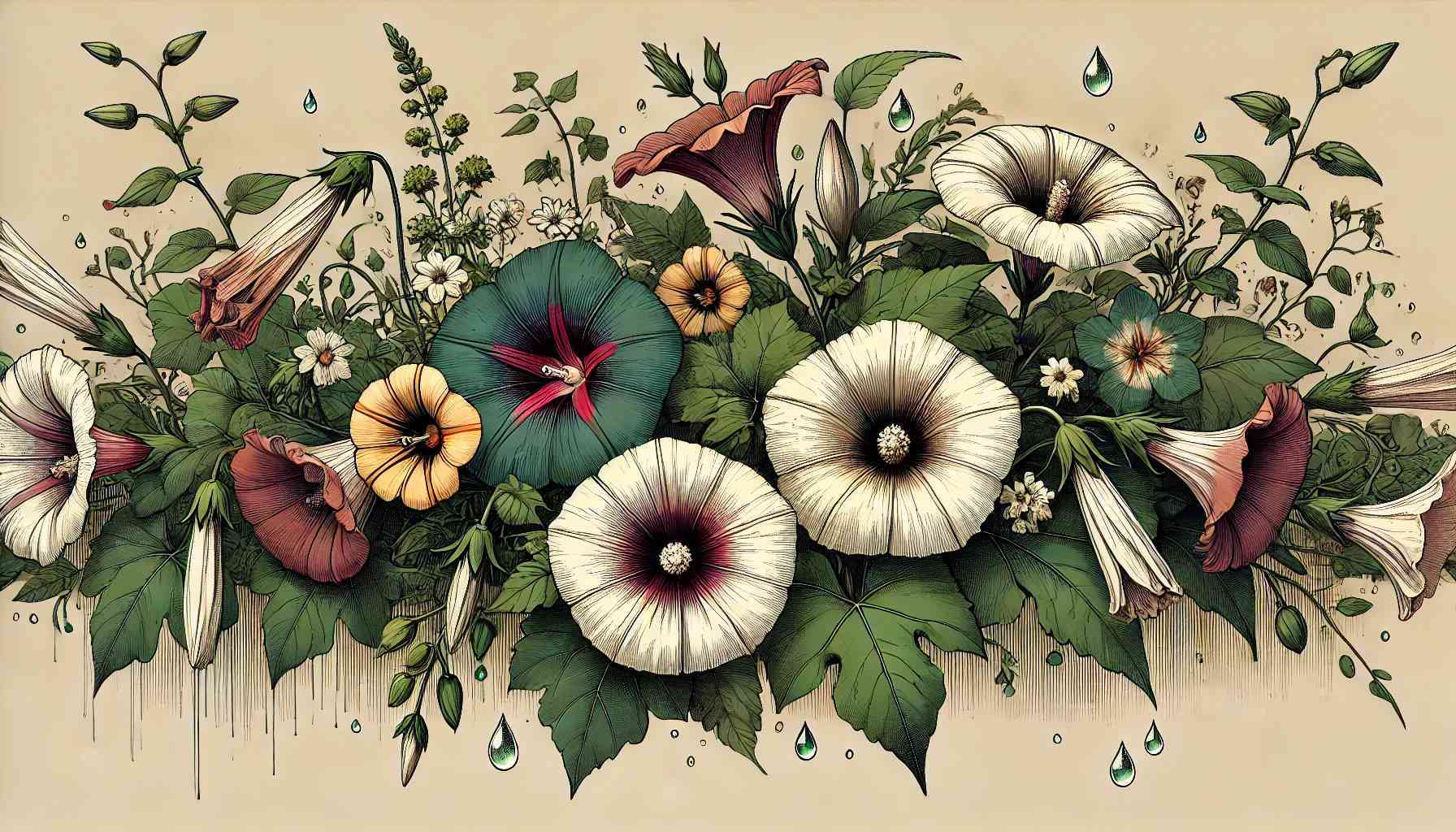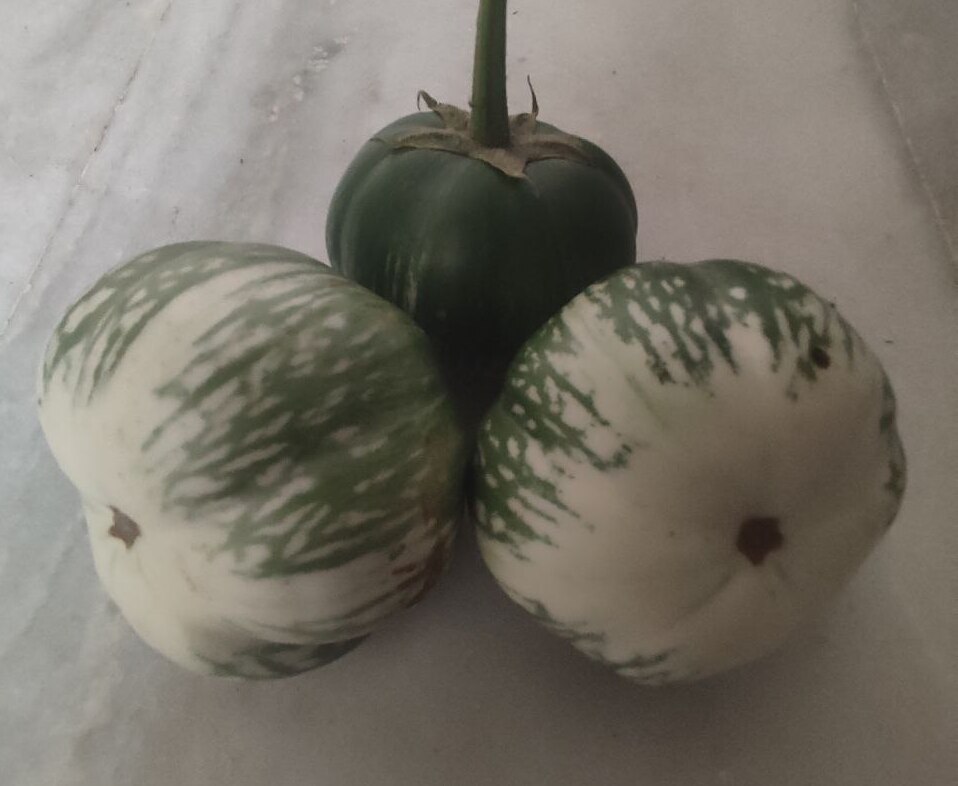
Brinjal, or solanum melongena, is a solanaceous crop native to Asia and India. This warm-season vegetable is grown as a perennial plant in its native regions but is typically grown as an annual in other parts of the world.
Brinjals are closely related to tomatoes and chilli, and enjoy similar conditions. They are happy in containers and growing bags, as well as in the ground.
They come in various shapes like oval, round, teardrop-shaped, or even cylindrical. You’ll see them in a range of colors – green, purple, white, black, and some even have patterns on them.
Fun Fact: Although considered a vegetable, they are actually a fruit and part of the nightshade family.
In this blog post, we’ll share the top 10 tips for growing brinjal successfully in your home garden.
Tip 1: Choosing the Right Variety
If your garden is outdoors and you have plenty of space, feel free to experiment with all sorts of varieties. However, if you’re planning on using pots for your gardening adventure, it’s usually better to opt for varieties that produce smaller fruits.
That being said, if you’re set on growing a larger variety, just ensure you have a large enough container to provide the necessary support.
You’ll find eggplants in many colours, shapes, and sizes. Some are white, some are deep purple, and some are green. They can be round or long and thin, and they come in all sizes from small to large.
Popular Varieties
Here are some good options to help you get started:
- Black Beauty – A traditional large, glossy, dark purple brinjal.
- Little Finger – If you’re looking for a good container variety, the “Little Finger” is a great choice, giving you cute little black/purple fruits that are just the right size.
- Rosa Bianca – An Italian variety with a pleasantly plump shape and white to soft mauve skin.
- Matu Gulla – An heirloom variety from India, sporting green fruits with white stripes.
Tip 2: Sowing Seed
The ideal time to plant your brinjal seeds is when the soil is warm, around 20 to 30 degrees Celsius. You can sow directly in your final pot, or start in a seed tray and transplant later.
Don’t bury those seeds too deep – just about 5 to 10 mm will do. A good seed starting mix should include at least 40 to 50% compost, such as vermicompost or decomposed cow dung.
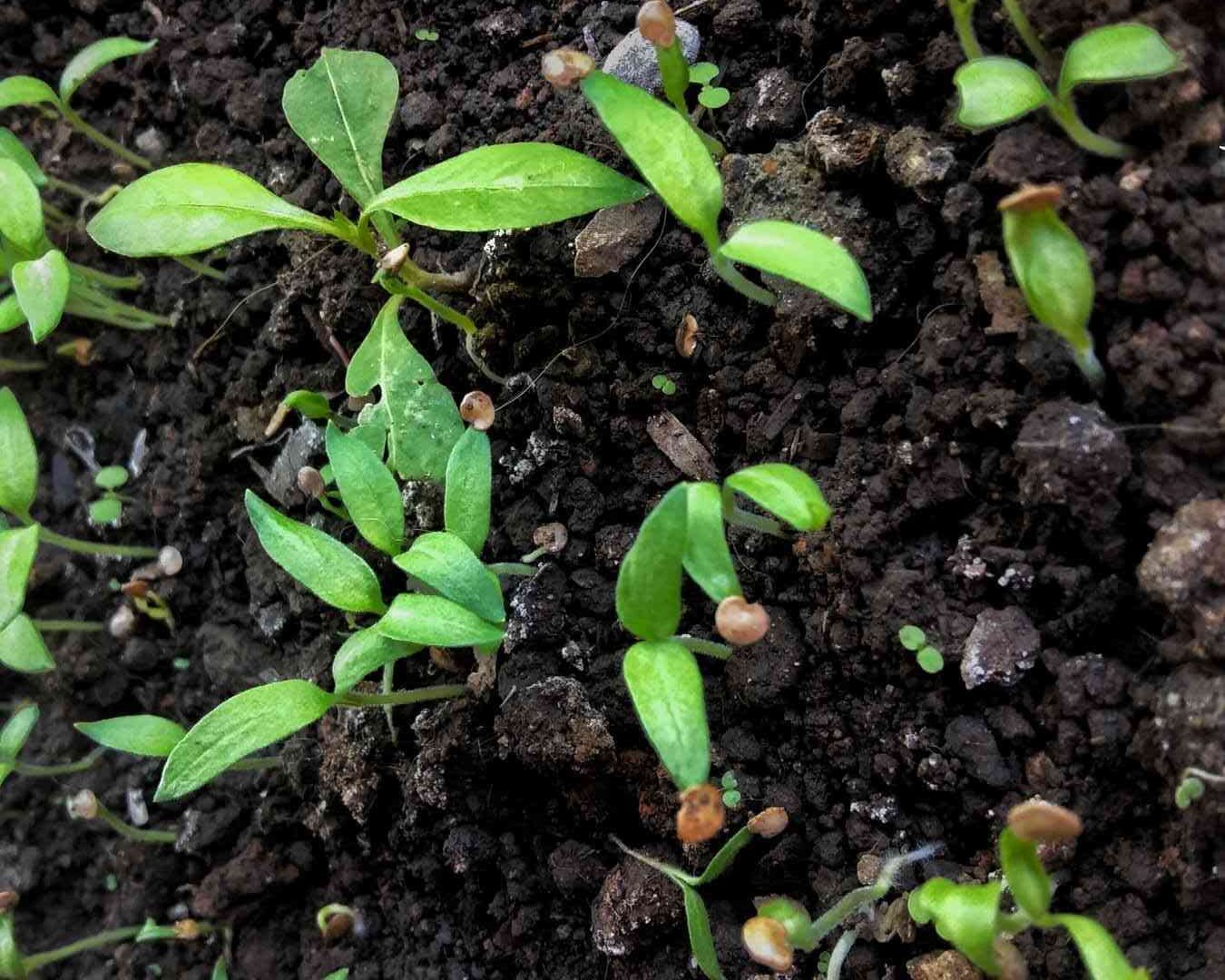
Brinjal seeds usually germinate in 7 to 10 days and you can transplant these after 30 to 40 days. The seeds should be covered lightly, about a quarter inch, and given enough moisture, heat, and light.
Tip 3: Preparing the Soil
A good soil mix is very important for proper root growth. A mix that works well includes 40% garden soil, 40% Coco-peat or peat moss, and 20% compost like decomposed cow dung or vermicompost.
You can consider adding extra things like perlite or neem cake powder to the soil. To make your plants stronger and make them flower and bear fruit more, mix in a handful of steamed bone meal powder or organic rock phosphate powder into the soil.
Tip 4: Growing in Container
You can easily grow brinjals in pots, making them a good fit for small gardens on balconies or patios. Brinjals can comfortably grow in containers of about 12 to 15 inches. Feel free to use any kind of pot, be it plastic, cement, or clay, as per your availability. If you have a terrace garden, consider using fabric grow bags.
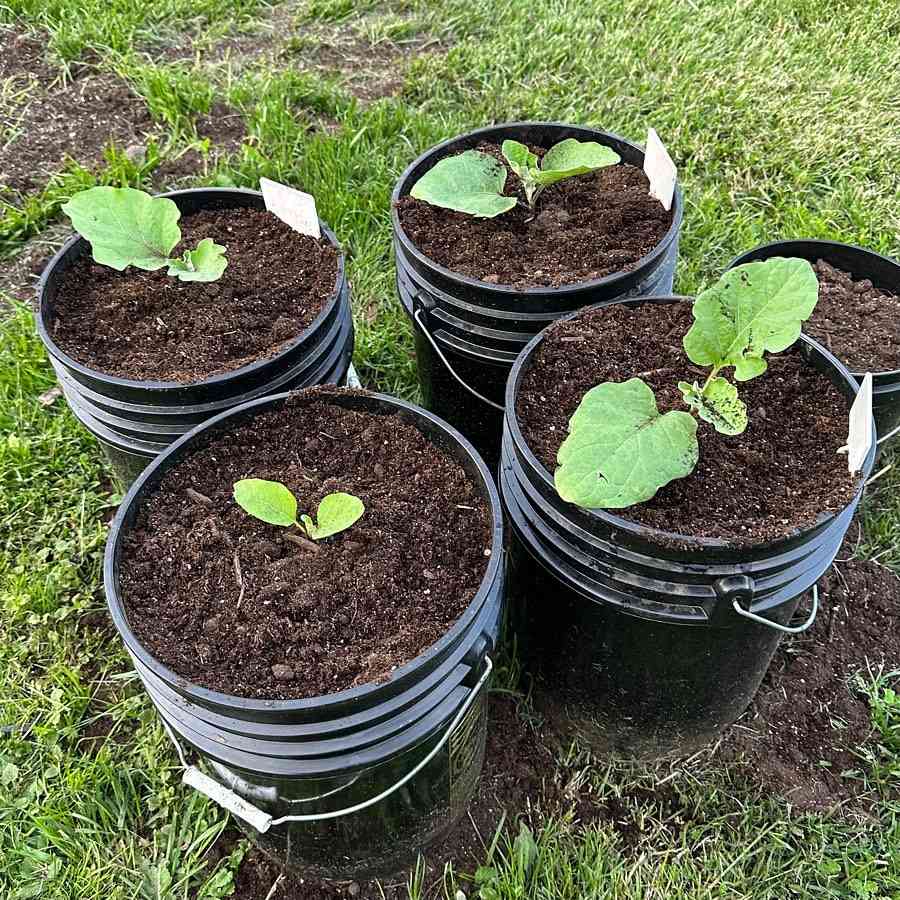
Ensure your pots have enough drainage holes at the bottom. If possible, choose a black pot, as it absorbs more heat, which brinjals love.
Small fruit varieties like the ‘Little Finger’ or ‘Thai Green’ are ideal for pot cultivation.
Tip 5: Watering Your Brinjals
Watering your brinjal plant well is crucial. They need a regular supply of water, but avoid waterlogging the soil. Improper watering can lead to fruit drop, small or poor quality fruits, or even bitter tasting fruits.
Be careful not to under-water during the fruiting stage. As brinjals start bearing fruit, they need more water. Always water them deeply and thoroughly to ensure the entire root system gets water.
To stop the soil from drying out too quickly and to control weeds, consider mulching on top of the soil.
Tip 6: Positioning in the Garden
Eggplants require a lot of sun and should be positioned in a location where they can access sunlight throughout the day.
Also keep them in a spot where pollinator insects like butterflies and honeybees visit frequently. Otherwise, they will fail to produce fruit and result in flower drop off.
Do not spray chemical pesticides which can drive away or even kill these beneficial insects.
Tip 7: Fertilizing Your Plants
During flowering and fruit formation, if you do not feed them with all nutrients and trace elements like iron, manganese, magnesium and others, brinjal can show signs of deficiency, fruit drop off, small sized fruit and so on.
A handful of compost like decomposed cowdung or vermicompost or both once every 15 days is the minimum requirement for eggplant. You can double this frequency or amount in the flowering stage. A good quality compost supplies most of the essential macro and micronutrients.
Tip 8: Pruning and Trimming
Pruning brinjal plant is important and should be done throughout the growing season, not just once.
First task is pinching the tops. This will encourage more branching and makes the plant bushy and produce a better yield. You can regularly trim or prune the unhealthy or dry branches to keep it looking good which also encourage good air circulation and prevents fungal disease.
Best practice is to limit the plant to three or four main fruiting branches during its entire life cycle. Pruning the eggplant will result in not only more fruit but better fruit. The fruits will be bigger, taste better, and have a higher nutrient content.
Here’s a great strategy for pruning your brinjal plants: Let the new shoot (the ‘sucker’) grow till it begins to flower and bears a single fruit. Once it does, cut it right above that fruit. This technique ensures that each branch yields a fruit without sucking out too much energy from the overall plant as it grows.
Tip 9: Support / Staking
Once the plants begin to start growing, this is a good time to install stakes or supports to keep the plants from falling over as they load up with fruits.
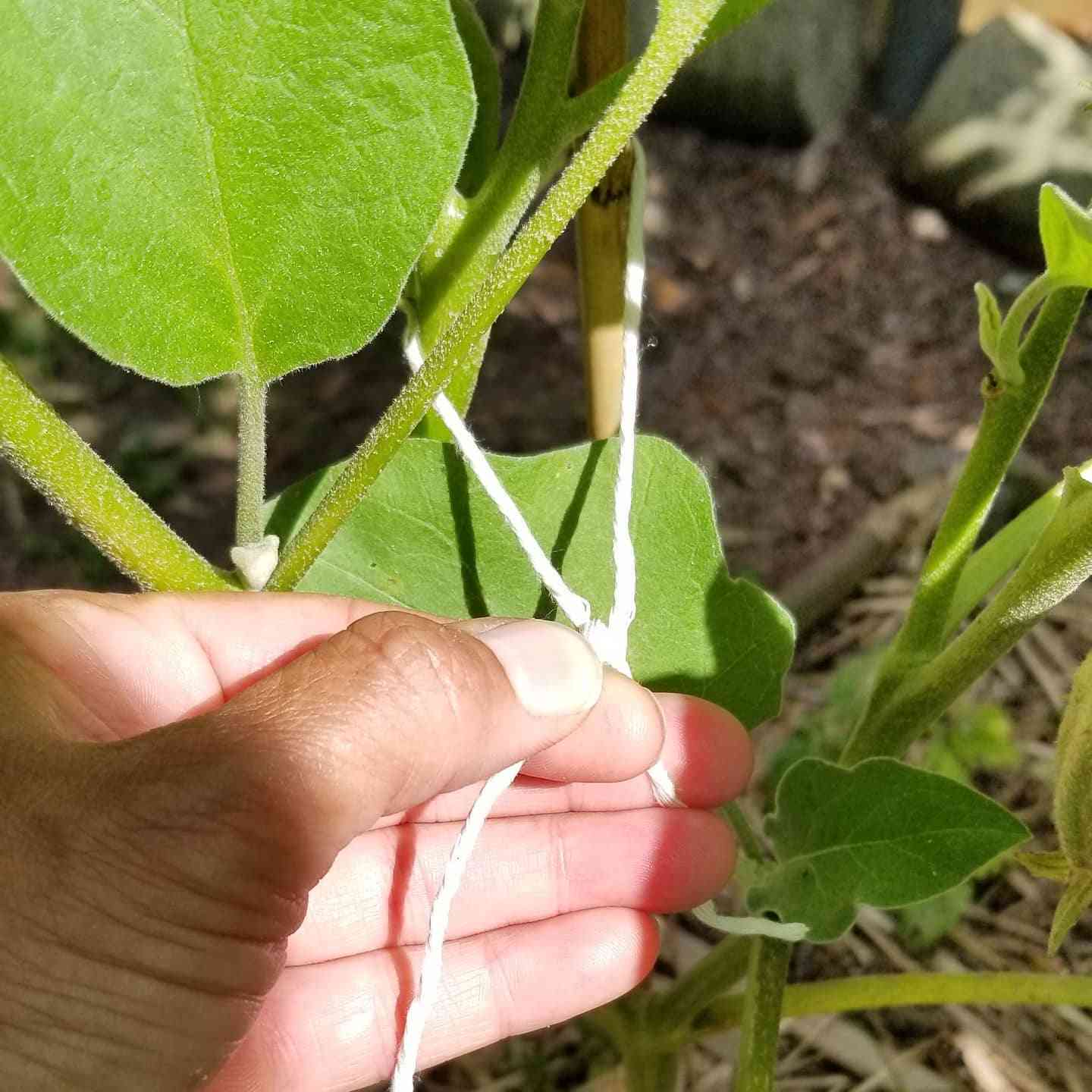
For staking, you can use simple sticks then tie the plant to the stick using a natural fiber twine. You may need to add more canes to support the side-shoots once fruits start to form, particularly if you have a heavy crop or large fruits.
Tip 10: Pest and Disease Management
Your brinjal plants might sometimes have trouble with pests such as flea beetles, spider mites, mealybugs, aphids, and white flies. A good prevention method is to spray your plants with neem oil every two weeks.
Mix about 5 to 10 ml of neem oil in a litre of water for this purpose. If your plants are already infested, you should spray this mixture once or twice a week until all the pests are gone.
In addition to neem oil, you can also use a liquid soap spray to deter pests. Mix a little bit of liquid soap in water and spray it on the plants, it’s a simple and effective way to keep many pests at bay.
Tip 11: Harvesting Your Brinjals
To get the best tasting fruit, harvest it when it’s young. This also encourages new fruit formation. Eggplant fully matures at around 100 days, but its best to harvest at around 80 days or lesser. One easy sign to look for is the skin shininess. The skin of the fruit should look glossy and unwrinkled and have a uniform colour.
The fruit should be cut off with pruning shears rather than ripped off. Harvesting should be done early and often to keep the production going and to ensure the fruits are fresh and tasty.
Tip 12: Saving Seeds for Next Season
Brinjal is one of the easiest crops to save seeds from, making it very beginner-friendly. To save brinjal seeds, wait until the brinjal turn a yellowish-brown colour and will lose its shiny appearance.
Slice open the eggplant and separate the flesh from the seeds. Put the seeds in a bowl of water and wash the pulp away. Strain the seeds, pat them dry, and spread them out on a tray to dry not more than two seeds thick.
Tip 13: Grow non-GMO brinjal organically
Growing organic and non-GMO brinjal can result in healthier plants and produce, free from synthetic chemicals. This way of growing brinjal is better for the environment because it reduces the use of harmful pesticides and fertilizers.
Non-GMO brinjal seeds are seeds that have not been altered at the genetic level.
Genetic modification involves altering the plant’s DNA to achieve desired traits like disease resistance or increased yield.
We are proud to offer a huge collection of rare heirloom brinjal seeds, which are a testament to the rich biodiversity and heritage of our agriculture. These seeds are all natural and have not undergone any genetic alterations. We encourage you to try these heirloom varieties and say no to GMOs
Organic brinjal gardening benefits from natural fertilizers like compost, manure, bone meal, and fish emulsion. These provide essential nutrients and improve soil health.
FAQs
Q. What is the best season to grow brinjal in India?
In India, brinjal can be grown throughout the year, but the best time to sow seeds is at the onset of monsoon (June-July) or in winter (October-November).
Q. How do I deal with high temperatures when growing brinjal in India?
Brinjal is a warm-season crop and can tolerate high temperatures. However, during extremely hot summer months, providing shade during peak afternoon hours and ensuring adequate watering can help protect the plants.
Q. What are some local Indian brinjal varieties I can try growing?
India has a rich variety of brinjals. Some local varieties you can try include Mattu Gulla (a special variety from Karnataka), Purple Oval Thorned Brinjal and tri-colour heirloom brinjal.
Q. What companion plants can I grow with brinjal in India?
Companion plants like beans, marigold, and mint can be beneficial when grown with brinjal. They can help deter pests and improve the overall health of the garden.
Q. What should I do if my brinjal plants are not producing fruit?
Lack of fruit can be due to several factors, including insufficient sunlight, lack of pollination, or nutrient deficiency. Make sure your plants are getting enough light, consider hand-pollinating the flowers, and ensure they are receiving balanced nutrition.
Final Thoughts
To wrap up, we want to remind you of this crucial fact: your garden is your masterpiece, your laboratory. It’s a reflection of your efforts, your dedication, and your love for growing things.
So, get out there, make the most of these tips, and give your brinjals the best chance at success!
What’s your favorite brinjal growing tip? Do you have a unique technique that works wonders? Or perhaps there’s a piece of advice you think should’ve made the list but didn’t? We’d love to hear your thoughts in the comments.


